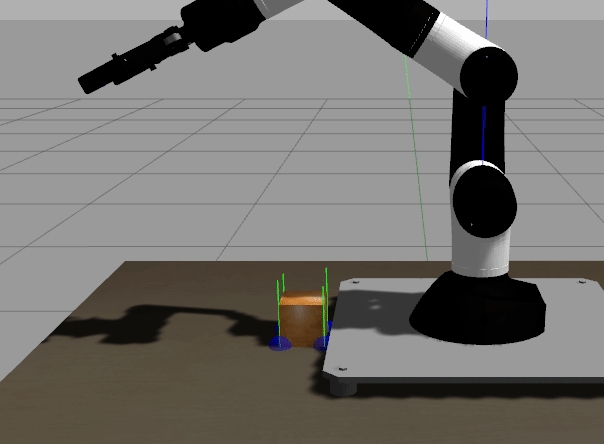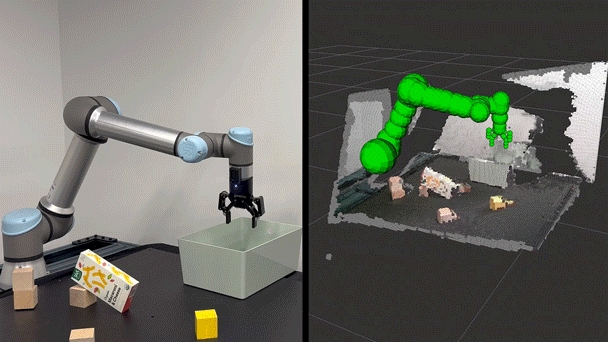Simulations
Simulation software accelerates robotics development by enabling virtual testing of control algorithms, physics interactions, and AI training workflows before committing to hardware35. Modern platforms span middleware frameworks, model-based design tools, open-source physics engines, and GPU-accelerated synthetic data pipelines to cover every stage from prototyping to deployment711.
WOKWI

Looking for an easy beginner-friendly setup to simulate microcontrollers and visualize hardware Interaction, not much need be said check out Wokwi Here: https://wokwi.com
ROS
ROS (Robot Operating System) is an open-source SDK providing drivers, state-of-the-art algorithms, and developer tools for robotics applications across research and industry2. It offers a standard platform that carries projects from initial prototyping through to production deployments3. ROS supports indoor, outdoor, underwater, space, consumer, and industrial domains under a unified middleware architecture3. ROS 2 extends this to Linux, Windows, macOS, and embedded targets (via micro-ROS), ensuring seamless integration on robots and backend systems alike3.
Official site: https://www.ros.org2
MATLAB & Simulink
MATLAB and Simulink deliver Model-Based Design for robotics, letting engineers build digital twins with accurate kinematics, dynamics, and sensor models in a single environment16. The Robotics System Toolbox and Simscape enable co-simulation with Gazebo and Unreal Engine for high-fidelity scenario testing and automated validation workflows5. Built-in code generation and hardware-in-the-loop (HIL) testing streamline the path from simulation to real-world deployment on ROS, microcontrollers, FPGAs, and GPUs5.
Official site: https://www.mathworks.com/solutions/robotics.html13
Gazebo

Gazebo is an open-source 3D simulator featuring multiple physics engines (ODE, Bullet, Simbody) that model collisions, friction, and gravity for realistic robot behavior7. It provides sensor plugins for cameras, lidars, GPS, IMUs, and contact/force sensors, with a plugin architecture for extending functionality7. Native ROS integration lets simulated robots publish and subscribe on real ROS topics, facilitating direct algorithm tests without hardware changes8.
Official site: https://gazebosim.org8
NVIDIA Isaac Sim

Isaac Sim is a GPU-accelerated robotics simulator built on NVIDIA Omniverse, offering physically accurate multi-physics and real-time ray-traced rendering for photorealistic environments11. It includes ROS 2 bridges for testing complete software stacks, Isaac Lab for reinforcement-learning agent training, and Replicator for generating large-scale synthetic datasets11. Delivered as a local application or container on AWS, Azure, and GCP, Isaac Sim leverages RTX GPUs to scale simulation and AI workflows in the cloud20.
Official site: https://developer.nvidia.com/isaac-sim10
Each of these tools plays a distinct role-from middleware and algorithm prototyping (ROS), through model-based design and co-simulation (MATLAB/Simulink), to open-source physics testing (Gazebo) and large-scale AI training with synthetic data (Isaac Sim)-together forming a comprehensive simulation ecosystem for modern robotics.
Simulation Software Roles
Offline Programming & Virtual Commissioning: Create and validate robot programs in simulation to prevent production-line downtime and avoid on-site errors8.
Physics-Based Testing: Emulate real-world dynamics, collisions, and sensor feedback to refine control algorithms under varied conditions2.
Digital Twin & Facility-Level Validation: Mirror entire production cells or assembly lines for real-time AI testing, bottleneck analysis, and layout optimization2.
Motion Planning & Control Verification: Test path-planning, obstacle avoidance, and robotics frameworks (e.g., ROS) without hardware risks6.
Machine Learning & Reinforcement Learning: Train perception and decision-making models using high-fidelity simulated sensor data before deployment2.
Operator & Maintenance Training: Provide safe, interactive 3D scenarios for human operators to learn robot interfaces, emergency procedures, and maintenance tasks.
Popular Simulation Tools
Gazebo (gazebosim.org) Open-source simulator with multi-engine physics, extensive sensor models, and ROS integration for mobile and manipulator robots34.
Webots (cyberbotics.com) Versatile environment featuring a large library of pre-built robots, multi-language support, and ODE-based physics for educational and research projects34.
CoppeliaSim (V-REP) (coppeliarobotics.com) Modular platform offering real-time simulation, HIL testing, and APIs for Python, C/C++, Java, and MATLAB with multiple physics engines48.
RoboDK (robodk.com) Offline programming and simulation for industrial robot arms, supporting 80+ manufacturers, CAD integration, and collision-free path generation35.
AWS RoboMaker (aws.amazon.com/robomaker) Cloud-native simulation service that scales computing resources for large-scale scenario testing and seamless deployment to ROS-based robots3.
Visual Components (visualcomponents.com) Focused on industrial cell design, robot reach-ability studies, collision analysis, and throughput optimization with 3D animations6.
Fuzzy Studio (fuzzylogic.ai) No-code environment for creating and validating robotic cells via drag-and-drop workflows and instant simulation feedback7.
DELmia (3ds.com/products-services/delmia) Comprehensive virtual factory planning and robotics simulation suite enabling full lifecycle digital manufacturing7.
MoveIt Studio (moveit.ros.org) ROS-centric tool for debugging, diagnosing, and visualizing robot motion planning and calibration in simulation7.
Ready Robotics (ready-robotics.com) User-friendly OS and simulation platform that bridges virtual testing with real-world robot deployments in automated facilities7.
Vention (vention.io) End-to-end digital manufacturing platform combining CAD, simulation, and control for swift prototyping and factory automation7.
Wandelbots (wandelbots.com) Visual, demonstration-based interface for programming and simulating robot cells without extensive coding, accelerating deployment7.
Last updated